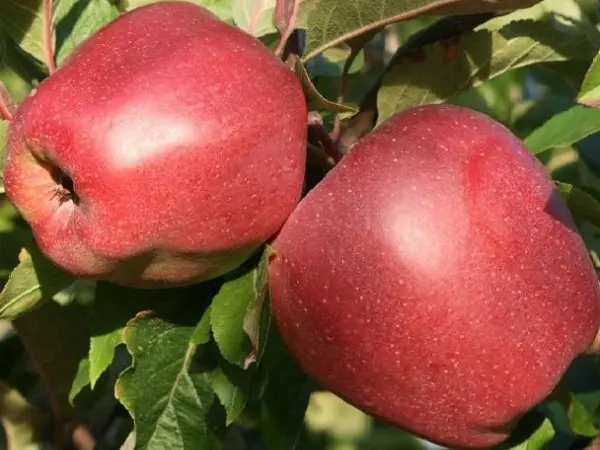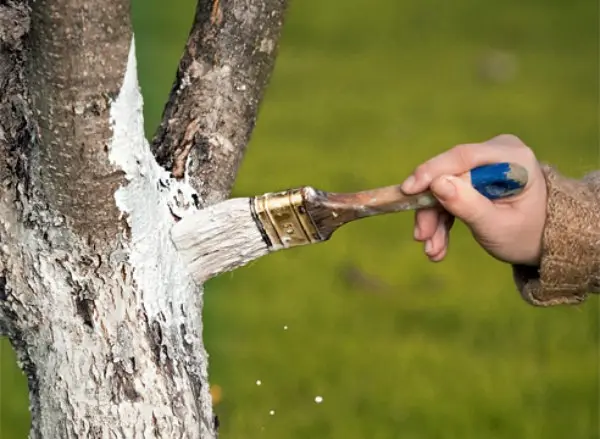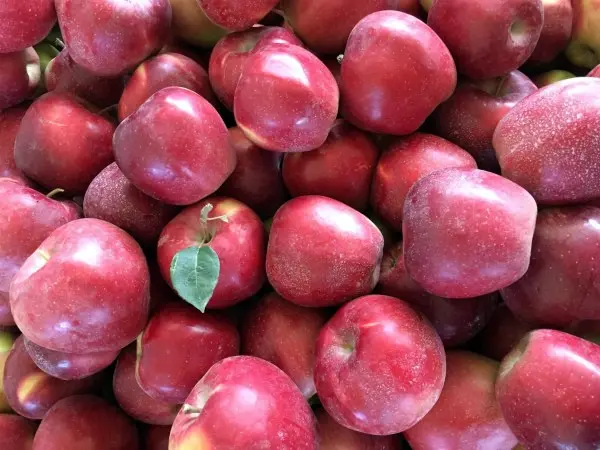Contents
One of the most famous European apple varieties is Gloucester. It is the fruit of many years of work of German breeders. Few people have not tried at least once the large bright red apples with a unique sweet taste, obtained by crossing the Glockenapfel and Richard Delicious apple trees. In this article you will find a detailed description of the Gloucester variety, care features, as well as possible ways to increase the yield.
Description and characteristics of the variety
Variety “Gloucester” is characterized by vigorous trees that grow quickly. The trees are decorated with a crown of medium density, oval or pyramidal in shape. Over the years, the crown of the apple tree acquires a rounded shape without outside interference. Skeletal branches in relation to the trunk are located at an acute angle, the tips of the branches are directed upwards. A big plus of the variety, which greatly facilitates the care of the tree, “Gloucester” almost does not form shoots.

The formation of fruits is mixed and occurs on all fruit shoots of the tree, that is, the apple tree bears fruit both on the annelids and on the fruit twigs and spears. Trees bloom late, but bloom for a long period. The variety is distinguished by inflorescences of 3-4 flowers with a high degree of pollen viability (up to 80%). With free pollination, the variety receives about 17-18% of ovaries, with a special selection of the best pollinators – up to 26%. The “best pollinators” are the varieties “Idared”, “Jonathan”, “Gala”, “Spartan”.
Variety “Gloucester” bears fruit with large apples weighing about 150-180 grams. They are rounded in shape, slightly conical, with pronounced ribbing in the upper part of the apple. The main color of the peel is light yellow, but it is almost invisible due to the rich red blurred blush. The peel of Gloucester apples is of medium thickness, rather dense and smooth, subcutaneous points are clearly visible under it. The calyx is closed, with a pronounced depression and folded walls. The pulp has a pleasant creamy shade, it is dense, with a pronounced sweet taste, very tender and juicy. The seed chambers inside the apple are semi-open, the seeds are medium in size, oval, brown.

Variety “Gloucester” ripens in the last days of September, while there is an increase in the number of apples every year. The peak yield of an apple tree falls on the 10th year of growth in one place – you can collect up to 70 kilograms of apples from one tree. In addition to stable fruiting, the variety is characterized by high winter hardiness and resistance to powdery mildew. Also, with minimal care, “Gloucester” is quite resistant to scab.
You can keep the commercial qualities of fruits in a cool place until February. If you store apples in the refrigerator, then the shelf life is extended until May. At the same time, the fruits are highly adaptable to transportation.

Care
Variety “Gloucester” requires standard care. Apple trees are recommended to be fertilized several times a year. It is recommended to use a mixture of mineral and organic fertilizers. It is important to apply certain fertilizers in a timely manner in order to support the tree, and not harm it. So, in early spring, as soon as the snow melts, it is recommended to apply slurry or an infusion of bird droppings and urea to help the tree recover from hibernation. On the eve of flowering, foliar top dressing of the apple tree is carried out with superphosphate and potassium chloride. You can also apply a large-scale complex of compost, superphosphate, potassium and urea to ensure good flowering and fruiting.
Watering apple trees is necessary once a month, bringing about 35-45 liters of water under each tree. Also, do not forget to regularly remove weeds from the trunk circle of the tree, as they prevent young seedlings from developing, taking nutrients from the soil.

Variety “Gloucester” requires annual pruning of the crown. Old branches, frozen over the winter, shrunken and broken, are subject to removal. The old bark must also be removed so as not to create favorable conditions for the development of fungal diseases and insect colonies. Sections and trunks must be whitewashed with garden lime. Also, trees need to be treated with preparations (carefully read the description on the packages!) “Topaz”, “Fitosporin”, “Skor” to destroy fungal spores. “Ekoberin”, “Zircon” or any other means based on karbofos will help to destroy insect larvae. Despite the fact that the variety is resistant to fungal diseases, preventive treatment should not be neglected.
Of course, young trees should not be left unprotected for the winter. Despite the good winter hardiness of the variety, the trees need additional preparations. It is advisable to tie the trunks with dense material in order to protect the bark and lower branches from rodents and hares, which do not mind eating your apple trees. This should be done until the trees are at least 5-6 years old, when the bark is already woody enough not to be of “gastronomic” interest for small animals.
The trunk circle must be mulched with sawdust, peat, straw or spruce branches. On the one hand, this will help keep the root system of apple trees intact, on the other hand, it will additionally protect against rodents.

How to increase productivity
Whatever variety you grow in your garden, you will need pollinator trees to get a harvest. That is why there should be at least two types of apple trees in the garden, and they should be combined with each other.
From this point of view, in order to get a Gloucester harvest, you will need trees of the Idared, Jonathan, Gala, Spartan varieties. They bloom and ripen at about the same time, so they complement each other well.
It will be no less fruitful to use a dwarf stock. Medium-sized rootstocks MM-106 perform well, using which you can get the first big harvest already in the second year after vaccination. Usually a tree of this variety bears fruit in the fourth year of cultivation in the garden. At the same time, the use of a dwarf rootstock also allows you to fully preserve the best qualities of both varieties, increases the immunity of the tree, which positively affects both subsequent fruiting and the general condition of the tree.
Video “Overview of the Gloucester apple tree”
Watch an overview of the Gloucester apple tree and learn about its benefits and growing features.









